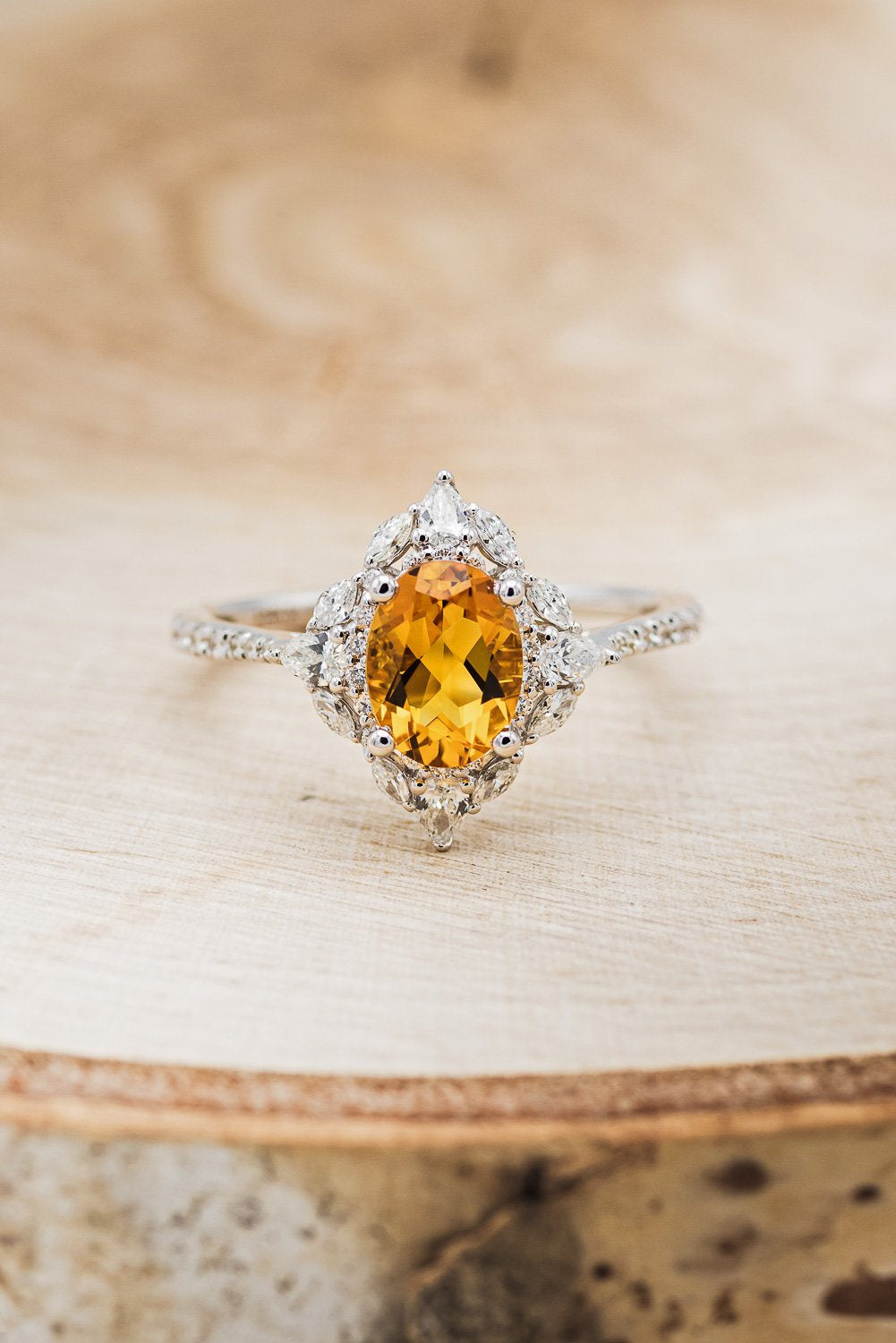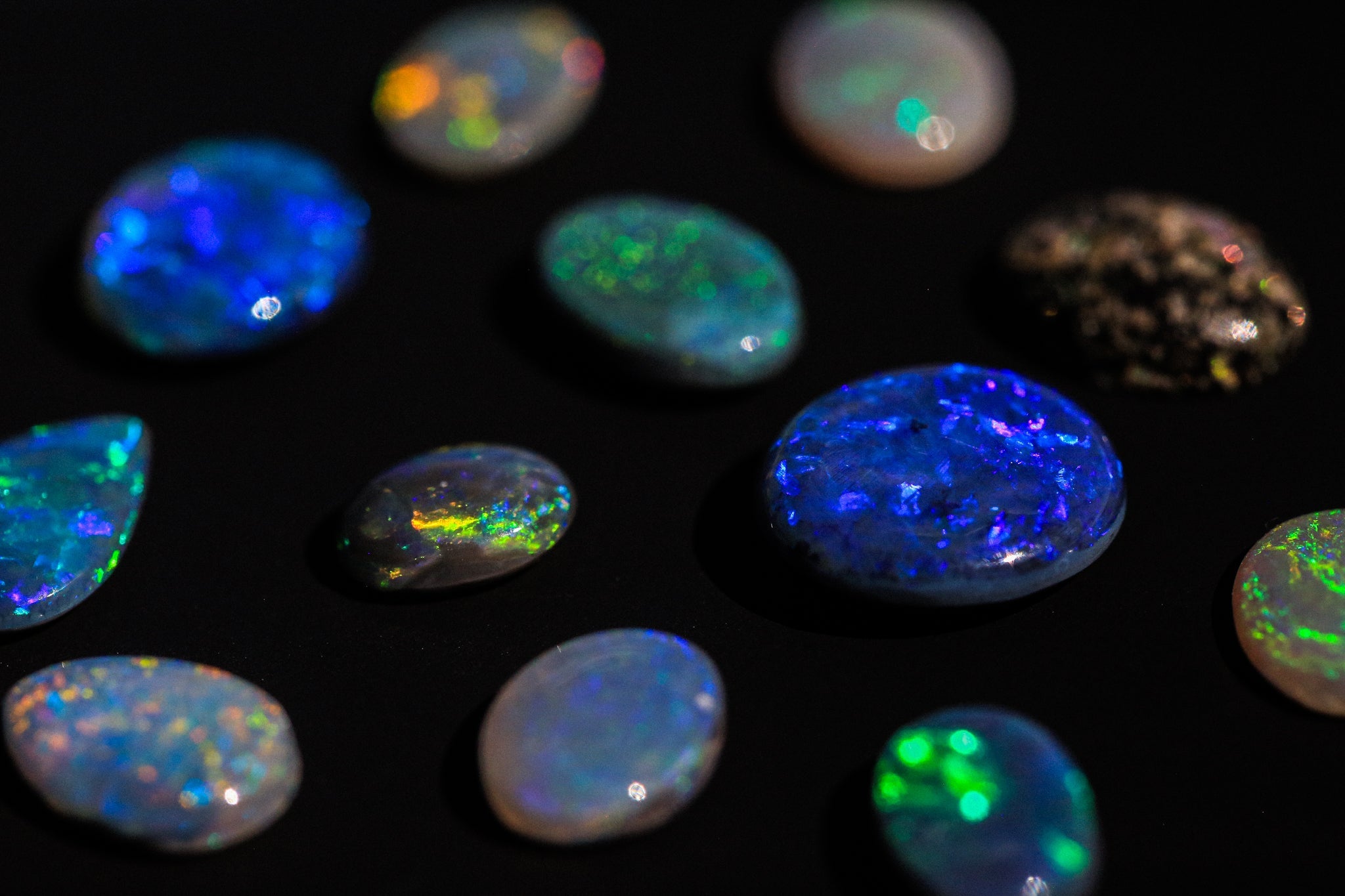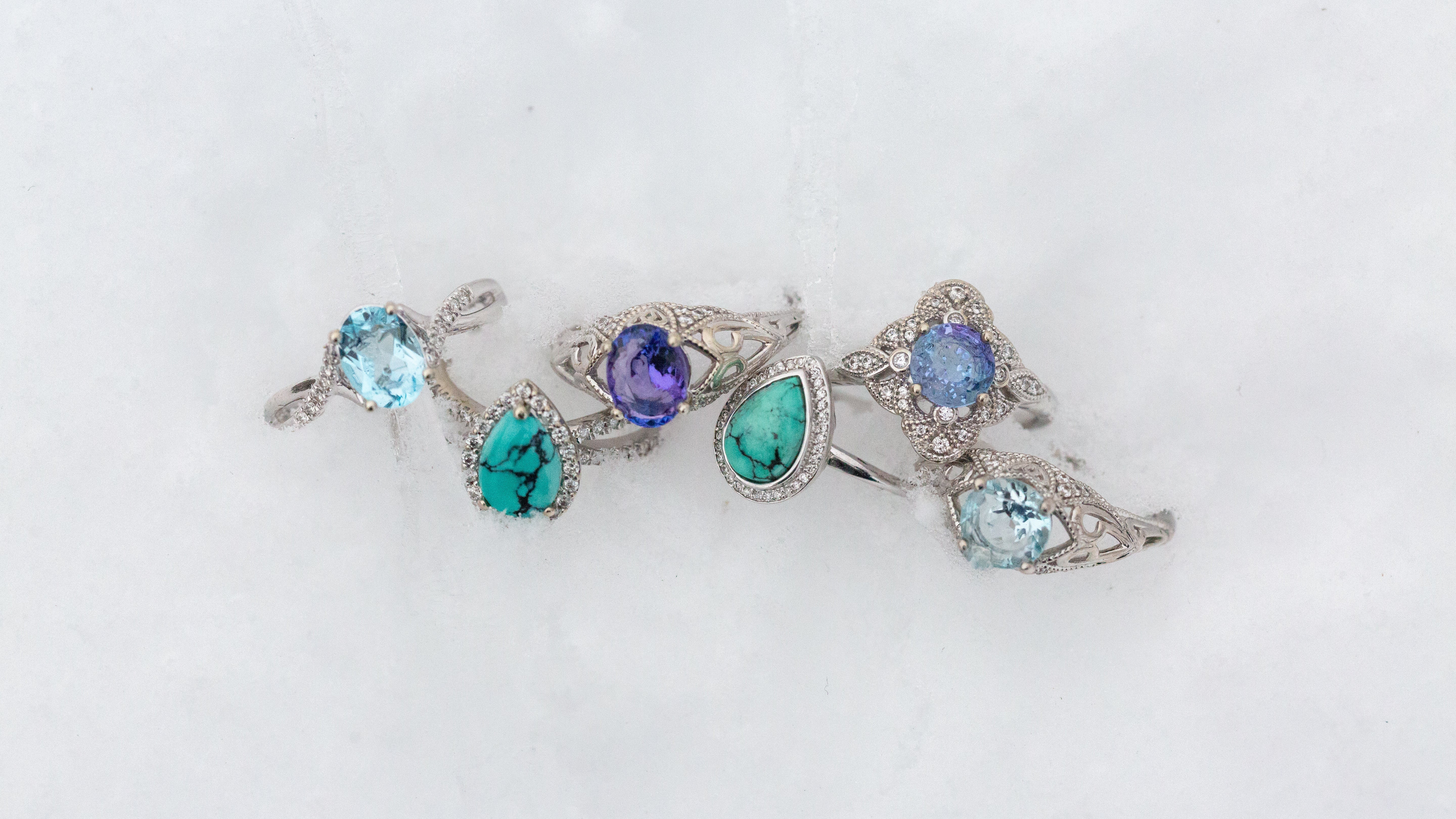
Citrine
Citrine is one of the November birthstones, as well as being the gem of the 13th anniversary. Its relatively low cost combined and its good durability make it a fantastic choice for a custom ring! With color reminiscent of fall leaves and citrus fruit, citrine increases courage, joy, and creativity.
Sourcing & Description
Citrine comes in shades of warm earth tones ranging between yellow and reddish-orange that can be pastel or vibrant. As seen in the photos below, a specific reddish-brown color variation is referred to as Madeira citrine. Madeira is a term used to describe the color, not the locality, of a citrine stone. The gorgeous colors of citrine come from traces of iron impurities within the quartz crystalline structure. Quartz can also be dyed with iron in order to create a yellow color; however, these stones are not citrine. The quartz specimen must have iron impurities throughout its structure and not just an outer staining to be classified as citrine. Unfortunately, there is also colored glass being sold as citrine on the market. Colored glass may have bubbles and/or uneven coloring and will not be as durable as genuine citrine. The best way to avoid fake citrine is to buy from reputable sellers.


Citrine can be found in alluvial deposits and even geodes in several places worldwide, but naturally occurring citrine is quite rare! Most citrine on the market is actually amethyst or smoky quartz that has undergone heat treatment. In fact, some of the natural citrine that is mined was amethyst that went through heat treatment from the natural processes of the Earth! This process is widely accepted, and heated amethyst/smoky quartz is classified as genuine heated citrine.
We can source both heated genuine and imitation citrine, but we typically use heated genuine citrine unless otherwise specified. The citrine we use is mined in Brazil. Brazil produces the largest quantity of citrine, but it can also be found in places like Madagascar and Russia.
The ring below features a beautiful 12x8mm Madeira citrine! Because citrine is a relatively hard stone, it can be faceted into a wide variety of cuts and shapes. In addition, citrine stones are available in large carat sizes because quartz crystals are often significant.

History
In the past, citrine was often mistaken as topaz due to their similarity in color. Because of this, the history between the two stones is intertwined and shares many similarities. Citrine was often referred to as "gold topaz," although today, we understand that they are different gemstones altogether. The name "citrine" came from the word French word "citron," meaning "citrus" or "lemon," a fitting name for the radiant yellow stone! Today, both topaz and citrine are birthstones of November, although citrine is a "modern" addition, becoming a November birthstone after topaz.
Citrine was a precious stone to the Greeks and Romans, who used the stone in jewelry, talismans, and carvings. Citrine was given the name "Merchant's Stone" as it was believed to bring good fortune in the senses of both luck and money. It was also used as a talisman against evil or harm and was thought to provide protective and soothing properties. Some even believed citrine prevented damage from venomous snake bites. Even today, some consider the stone to hold special metaphysical properties and is used in chakra work.
Citrine gained quite a bit of popularity during the Victorian era of the 1800s as it was a favorite of Queen Victoria. During this time, the stone frequently adorned brooches and other jewelry items. The stones' popularity surged again in the Art Deco movement of the early-mid 1900s and has remained a popular jewelry choice ever since!
Care & Cleaning
Citrine ranks 7 on the Mohs hardness scale, meaning that, in general, citrine is quite challenging and makes a good candidate for jewelry that is worn frequently. However, extreme heat changes and over-exposure to light should be avoided to avoid damage to the stone. As always, your jewelry should be removed before participating in any activities that pose a risk to your ring and/or hands, including but not limited to:
- Manual labor (including sports, going to the gym, gripping items with force, etc.)
- Household chores (washing dishes, laundry, cleaning, etc.)
- Contact with chemicals (using chlorine or bleach, perfumes, cosmetics, lotions, etc.)
- Showering
- Sleeping
- Swimming, using a sauna, etc.
The above is not an exhaustive list of activities that could damage your ring. Please read our complete Care Guidelines here to learn more about how you can best take care of your custom ring!
To clean a ring containing citrine, we recommend using warm soapy water and a soft brush. Avoid ultrasonic and steam cleaners, which could harm or affect the stone.
Be sure to store citrine jewelry away from any other jewelry that could scratch citrine jewelry or be scratched by citrine jewelry.
Designing a Citrine Ring
At Staghead Designs, our skilled artisans are passionate about handcrafting unique wedding rings made with meaningful materials. Many of our custom designs can be made with citrine, and usually without any increase in cost! Citrine is a perfect stone for a custom engagement ring, birthstone ring, or anniversary ring! We love to use Citrine for autumn themed engagement rings. The gravel looks incredible in yellow gold and is complemented beautifully by other earth-tone jewels such as peridot, as seen in the circle below. Browse our collections of custom handcrafted rings here or work with our designers to design your own!




